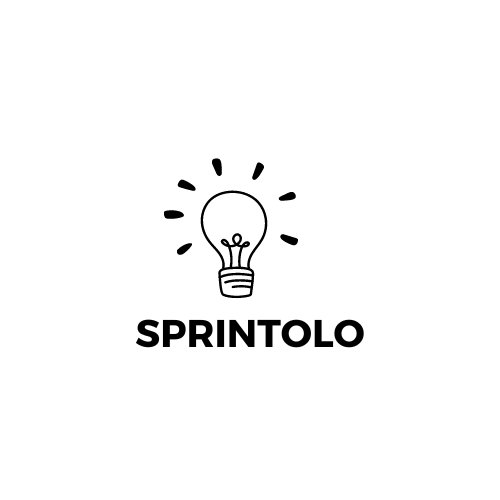
Skill Development:- The world of technology is changing at a breakneck speed, and it can be quite challenging to keep up with its demands. Whether you are looking to start from scratch or fine-tune your programming skills, learning in tech has become more accessible and versatile than ever. In this guide, we will explore the top 10 coding bootcamps, compare formal education to self-teaching, provide a learning roadmap, and highlight the best online platforms for coding.
1. Top 10 Coding Bootcamps and Their Benefits
Coding boot camps have been the waves of the last ten years of immersive, speed-based learning. Here is the list of top coding boot camps along with how they differ:
– The best thing about Le Wagon is its web development and data science courses. Most of its programs are on a project-based approach by emphasizing real-world coding practices.
– App Academy : Pay-when-you-get-hired model. Students only pay tuition after getting hired, so it is a low-risk option.
– Flatiron School: Offers courses in software engineering, data science, and cybersecurity.
– General Assembly: Known for its flexibility in full-time, part-time, and self-paced courses.
– Hack Reactor: Produces job-ready software engineers through its rigorous curriculum.
– Springboard: Personalized mentorship helps students navigate the complexities of coding.
– Thinkful: It features one-on-one mentorship and job guarantee, thereby making the learner feel accompanied throughout his entire learning.
– Ironhack: Global campuses with a feature to toggle between being in a campus or having online classes
– Block: The boot camp is mentor-led. It can be taken entirely at your own pace and encompasses a vast syllabus for the whole course.
– Coding Dojo: Teaches three full stack technologies which makes a whole-rounded educational experience of coding.
Benefits of Coding Bootcamps: Exposes one to the labor market quickly, hands-on training, they are structured and flexible, but pricier than university degrees in most cases.
2. How to Choose Between Computer Science and Software Engineering Degrees
It can be a bit challenging to choose between a computer science degree and a software engineering one. They are almost similar in what they are teaching, but there is a lot of difference between the two programs:
– Computer Science (CS): This discipline has a basis in theoretical concepts, such as algorithms, data structures, and computations. It is generally best suited for problem solvers, mathematics enthusiasts, and students interested in a deep understanding of how systems work, especially under the hood.
Software Engineering (SE): Focused on the hands-on application of engineering principles, SE involves designing, building, and maintaining software systems—perfect for those who enjoy developing, testing, and scaling software solutions.
Which Would You Prefer? In case you are more into the ‘why’ aspects of computer systems and like working in a research/academic environment, then CS would be the better way. If you have the penchant for project management and product development and love making applications, then SE would be the way.
3. Self Taught vs. Formal Tech Education: What Works Better?
One of the most frequently asked questions in tech is whether self-driven methods or formal education best serves a person.
Self-Taught Path
Advantages: Cost-savings, flexible schedule to learn on your own speed and at your own preferred pace and interest.
Disadvantages: High-level discipline and no structured guide as with formal programs is required.
Formal Education Path
Advantages: Structured curriculum, presence of professors and peer learning, and a stronger and more comprehensive networking circle usually.
– Cons: It is pricey and time-consuming.
Conclusion: This is left to your learning style, career goals, and resources. Self-taught programmers can really succeed, especially with the rise of online courses, coding communities, and open-source projects.
4. Learning Roadmap Of Skill Development: From Beginner to Advanced Programmer
Programming can be intimidating when you start. Here’s a roadmap to help you along the way:
– Beginner Stage:
– Basic: HTML, CSS, and JavaScript are a good combination for web development. For general programming, Python or Java is fine.
– Hands-on:4 Start building basic knowledge through Codecademy, freeCodeCamp, or Khan Academy.
– Intermediate:
– Dive Deeper: Explore data structures, algorithms, and object-oriented programming.
Begin Projects Develop small apps (for example, a to-do list app, calculator, weather app) to apply all the learnings made.
Advanced Stage
Be specialized in some area like mobile application development, data science, or the backend engineer. You have to start collaborating on open source: contribute to GitHub projects. Master the complex topics: learn the frameworks (such as React or Angular), databases, and cloud computing.
5. Top Online Resources to Learn How to Code
Online has completely altered the way people approach learning technology. Some best Resources:
– freeCodeCamp: Nonprofit that has a curriculum from basic web development to data visualization.
– Codecademy: Interactive and good for beginners; this is perfect for hands-on learning.
– Udemy: This platform offers hundreds of affordable courses, some as low as $2.99, ranging from beginner to advanced.
– Coursera: Collaborates with universities and organizations to offer college-level courses.
– edX: Similar to Coursera. It offers courses by excellent institutions like MIT and Harvard.
– Pluralsight: If you are a professional, you will love the learning experience concerning new technologies on this website.
– Khan Academy: The best for a novice; it is very easy to comprehend.
– Team Treehouse: Only one for project-based learning.
– LeetCode and HackerRank: Good for those who want to learn to code for improving skills during interviews.
– Scrimba: Offers live interactive video tutorials where you can code along in real time.
Conclusion: The secret to success in tech is not about picking the right path but the right step toward commitment toward continuous learning and practicing. The resources and the roadmaps are there. It’s in your hands to take that first step and keep going.
